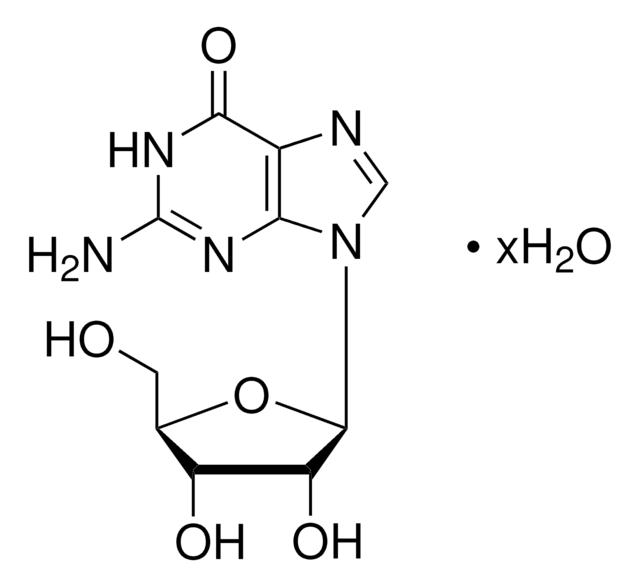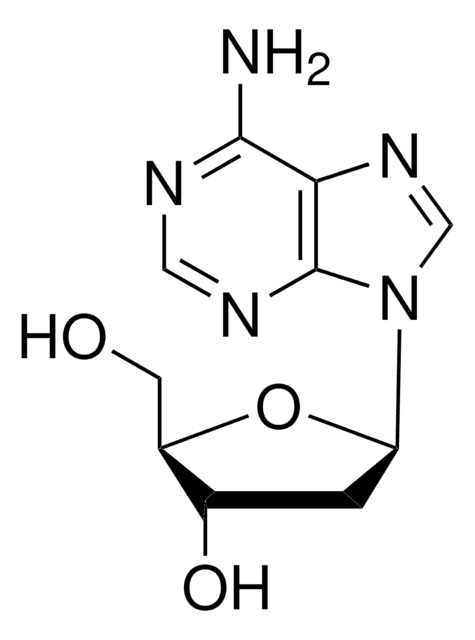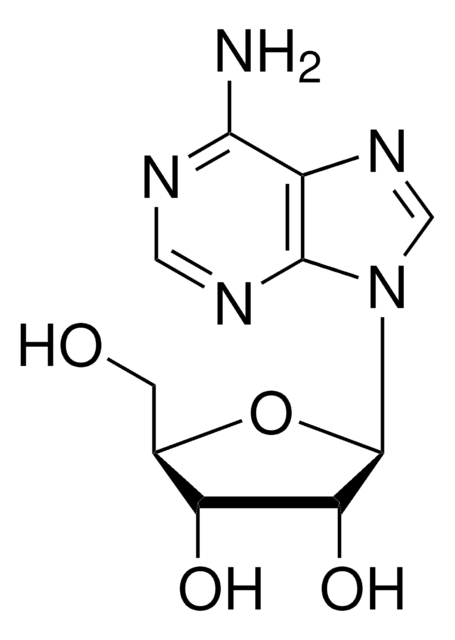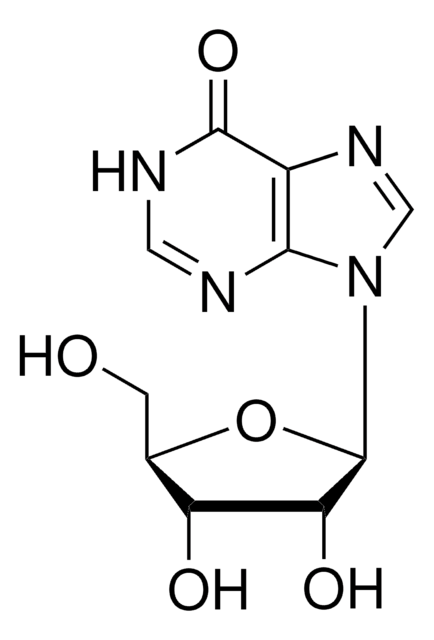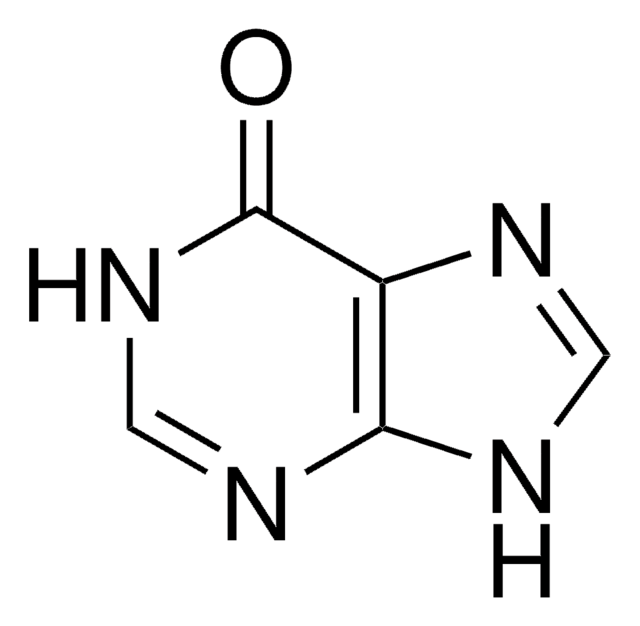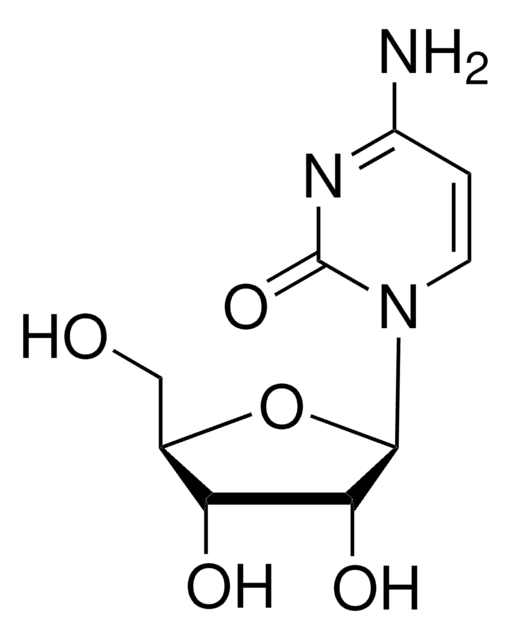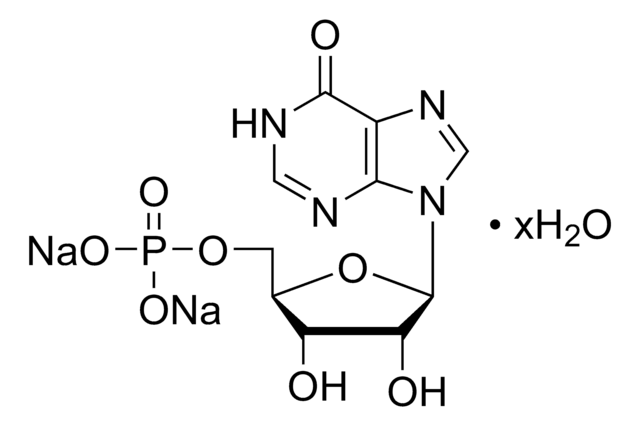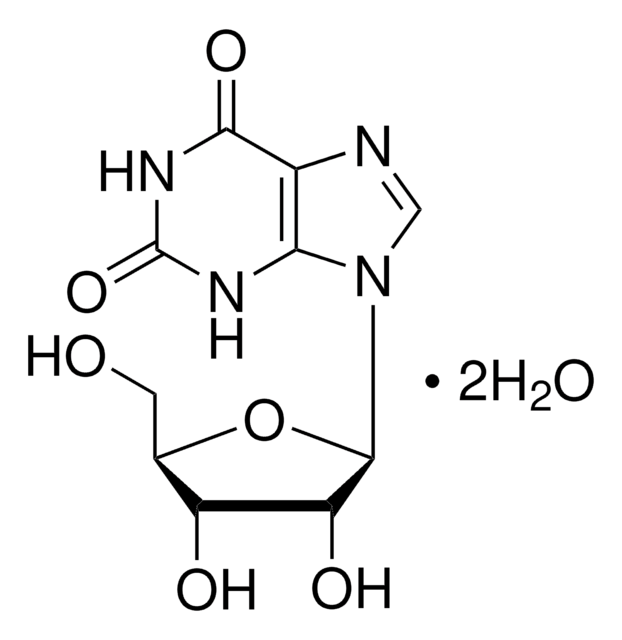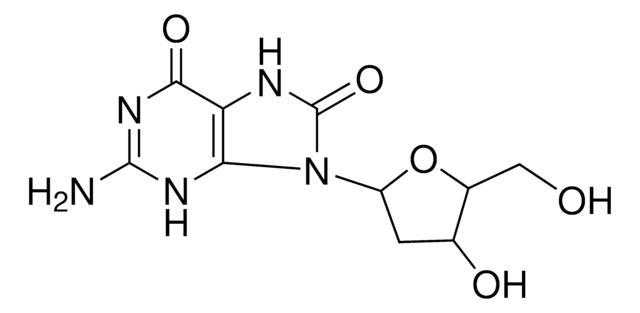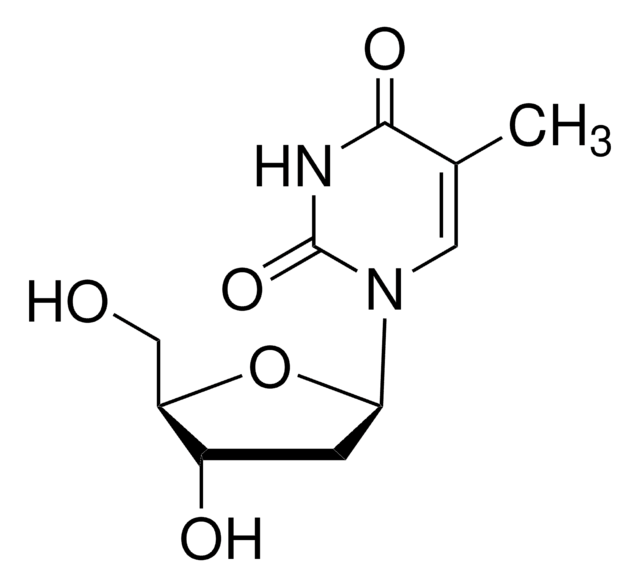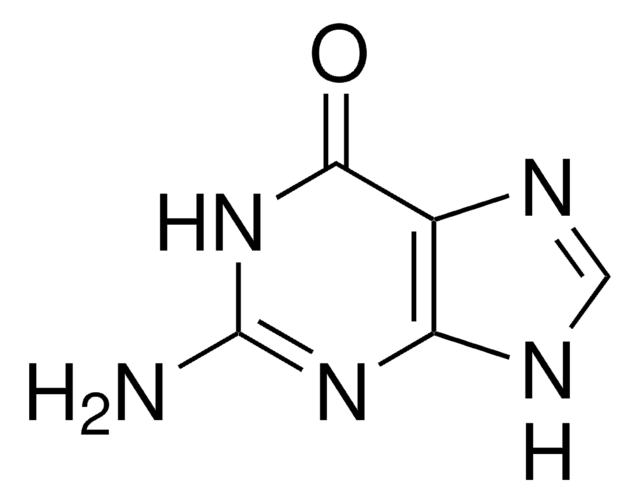75903
Guanosine
≥97.0% (HPLC)
Sinonimo/i:
9-(β-D-Ribofuranosyl)guanine, Guanine-9-β-D-ribofuranoside
About This Item
Prodotti consigliati
Livello qualitativo
Saggio
≥97.0% (HPLC)
Forma fisica
powder
Attività ottica
[α]20/D -73±2°, c = 1.5% in 1 M NaOH
Impurezze
≤6.0% water
Punto di fusione
250 °C (dec.) (lit.)
Stringa SMILE
[H]O[H].NC1=Nc2c(ncn2[C@@H]3O[C@H](CO)[C@@H](O)[C@H]3O)C(=O)N1
InChI
1S/C10H13N5O5/c11-10-13-7-4(8(19)14-10)12-2-15(7)9-6(18)5(17)3(1-16)20-9/h2-3,5-6,9,16-18H,1H2,(H3,11,13,14,19)/t3-,5-,6-,9-/m1/s1
NYHBQMYGNKIUIF-UUOKFMHZSA-N
Cerchi prodotti simili? Visita Guida al confronto tra prodotti
Applicazioni
Altre note
Codice della classe di stoccaggio
11 - Combustible Solids
Classe di pericolosità dell'acqua (WGK)
WGK 2
Punto d’infiammabilità (°F)
Not applicable
Punto d’infiammabilità (°C)
Not applicable
Dispositivi di protezione individuale
Eyeshields, Faceshields, Gloves, type P2 (EN 143) respirator cartridges
Certificati d'analisi (COA)
Cerca il Certificati d'analisi (COA) digitando il numero di lotto/batch corrispondente. I numeri di lotto o di batch sono stampati sull'etichetta dei prodotti dopo la parola ‘Lotto’ o ‘Batch’.
Possiedi già questo prodotto?
I documenti relativi ai prodotti acquistati recentemente sono disponibili nell’Archivio dei documenti.
I clienti hanno visto anche
Il team dei nostri ricercatori vanta grande esperienza in tutte le aree della ricerca quali Life Science, scienza dei materiali, sintesi chimica, cromatografia, discipline analitiche, ecc..
Contatta l'Assistenza Tecnica.